Colosseum is by far the most amazing sight, still awe-inspiring by its size:
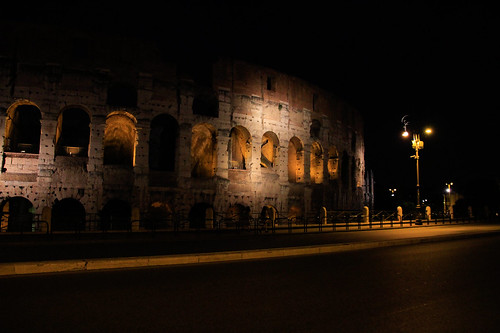
Colosseum didn't earn its name by itself. As strange as it sounds, there stood a more colossal thing next to it, something that was more amazing to the ancient Romans than the arena itself. It was a statue of Nero, gold plated, and more than 100 feet tall. (Only a few feet shorter than the Statue of Liberty!) The overize Nero was referred to as the Colossus, and the arena inherited the name.
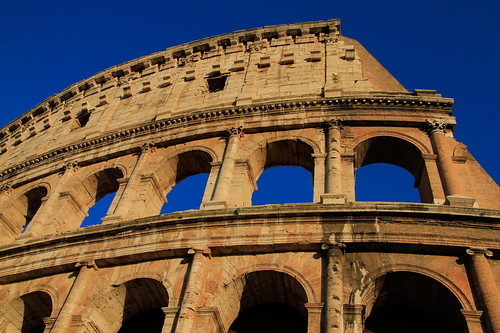
Do you see the "pockmarks" in the side of the openings? They mark the spots where iron and lead clamps held the stone blocks together. These were pulled out more than a thousand years ago for their metal. It didn't seem to hurt some sections, while the others just fell apart after that.
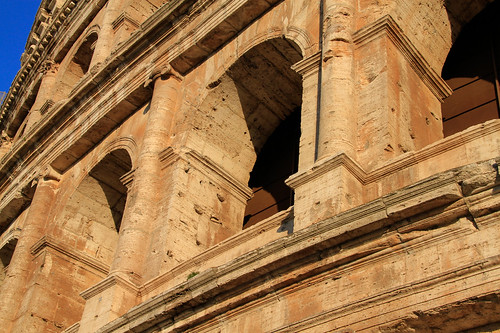
The underneath of the arena had two stories of secret rooms and corridors that led to hidden doors in the arena floor.
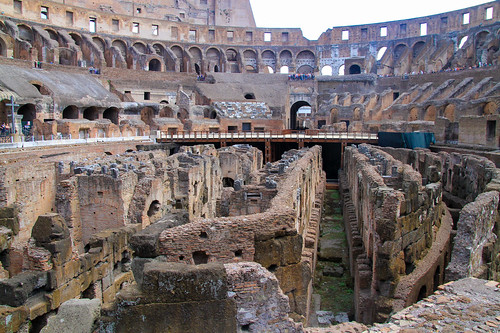
The exposed stones on the top is what Colosseum is actually made of. It is Travertine marble, of such a poor quality that it's little more than sandstone. There is no mortar holding it together, only gravity.
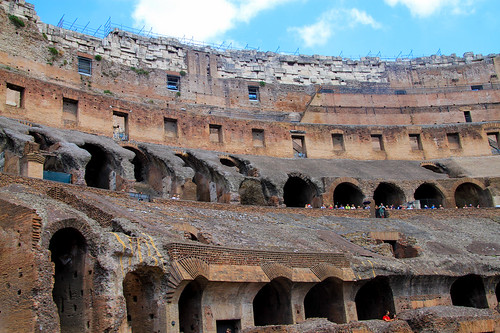
This flew over the Colosseum while we were in it. It's the double-decker A380, the largest passenger plane in the world. How appropriate.

The Arch of Titus in the Roman Forum, built around the same time as the Colosseum.
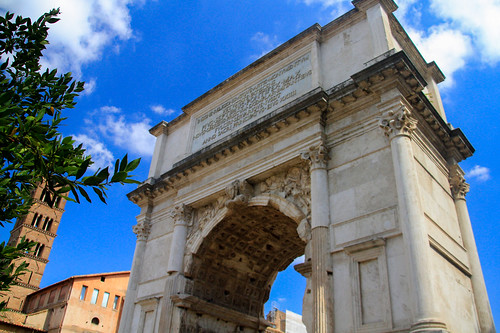
The arch commemorates a victory that is no longer relevant to the winners, but is still mourned by the losers. The event is the sack of Jerusalem in 70 CE, which left only one wall of Herod's Temple standing - the Wailing Wall:
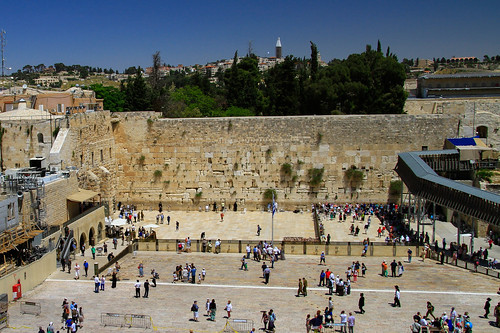
Indeed, on the side of the Arch of Titus, there is a relief of Roman soldiers carrying out the temple's menorah. (It felt a little unreal to have experienced both of these sites, almost two thousand years old each, echoing to each other across my trips just three months apart.)
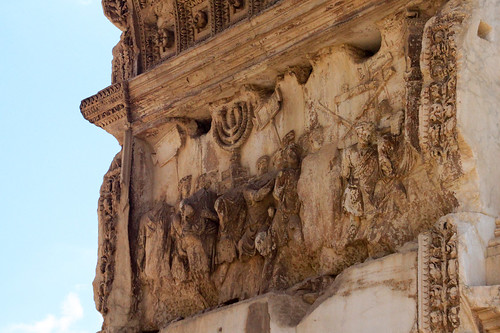
Roman Forum, Via Sacra. On the left, the pavement is 2000+ years old. On the right, it's just... a few hundred.
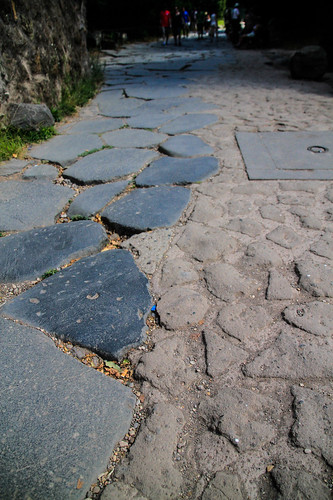
Moving on to the next ancient Roman wonder, this is the always-recognizable Pantheon:
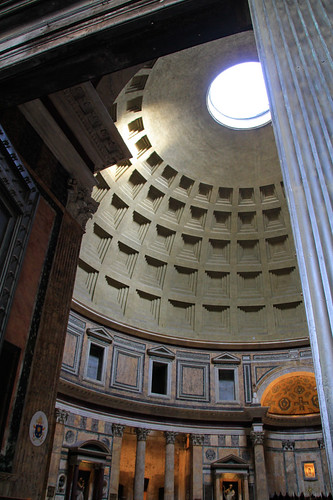
The Pantheon doesn't have windows. The entire basilica is lighted through a single oculus in the middle of the dome.
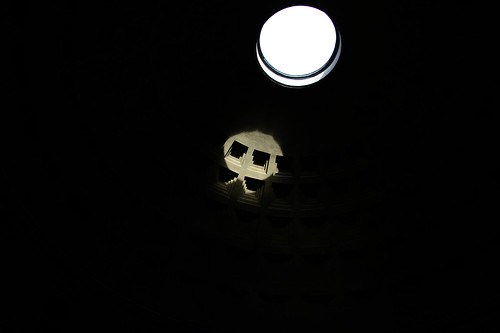
The dome itself is still unsurpassed as the largest concrete dome in the world. To this day no one knows how it was constructed. One educated guess holds that the Pantheon was first filled with a mound of sand and the dome was poured into a mold that rested on top of it. The dome is four times thicker on the bottom than on the top.
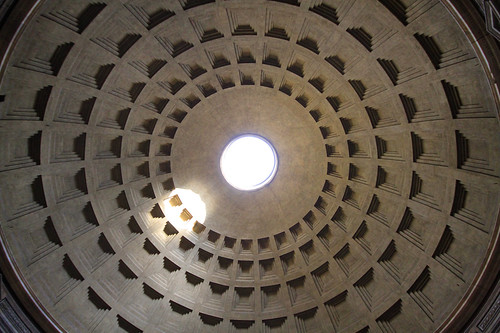
Arch of Constantine, the largest of the ancient Roman's arches. It dates from 315 CE.
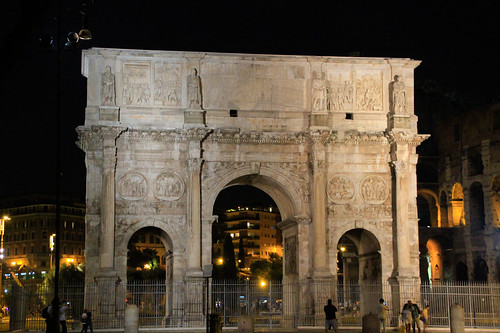
Finally, browsing through various churches in Rome, we came across the Basilica of San Clemente. The current structure dates from 12th century and it was built on top of an earlier 4th century's basilica (which in turn was built on top of 1st century's Roman house). In the excavations of the earlier basilica, they discovered the tombs of Cyril and Methodius, two 9th century's monk brothers who gave the Eastern Europeans their alphabet - Cyrillics. Now it is a shrine with plaques of gratitude from various Cyrillic-using peoples.


No comments:
Post a Comment